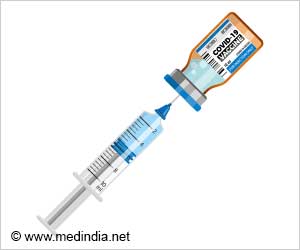The combination of two drugs dabrafenib and trametinib showed longer survival and fewer or later recurrences in malignant melanoma.

TOP INSIGHT
Combination of Dabrafenib plus Trametinib has got advantages like improvement in overall survival rate and fewer chances of recurrence in patients with melanoma.
Read More..
Drugs aim to inhibit tumour growth by targeting two elements of intracellular signal cascades
Melanomas are tumours arising from the pigmented cells of the skin (melanocytes). They can also grow into deeper tissue layers and affect other organs. Until a few years ago, treatment options for the advanced stage were very limited. Now several drugs have become available which either promote certain cells of the immune system - the cytotoxic T lymphocytes - to destroy the cancer cells, or which themselves aim to prevent cancer cells from growing.
Some of these drugs, the so-called monoclonal antibodies, bind to receptors on the cell surface. These include nivolumab, on which IQWiG completed an early benefit assessment in the beginning of December.
Other drugs, so-called tyrosine kinase inhibitors, aim to inhibit different elements of the signal cascade inside the tumour cells, which lead to a changed reading of certain genes in the cell nucleus, resulting in increased cell proliferation. By means of mutations, some of the tumours often become resistant to a drug. Combining two drugs can inhibit two elements of the cascade at the same time and overcome such resistances.
For the first drug combination, the drug manufacturer presented data from two data cut-offs of the ongoing COMBI-AD study. The drug combination showed a clear advantage over the appropriate comparator therapy regarding the outcome "overall survival": At the first data cut-off, which was about two and a half years after the last study participant had started medication, about 14 per cent of the patients in the drug arm, but already just over 21 per cent of the patients in the comparator arm of the study had died.
This finding was accompanied by indications of disadvantages of the drug combination regarding some side effects. Some of these side effects were major, but they did not raise general doubts about the advantages. Overall, there was an indication of considerable added benefit of dabrafenib plus trametinib.
Encorafenib plus binimetinib: indirect comparison showed no advantages
The second drug combination targets the same elements of the signal cascades in the tumour cells as the first one, i.e. two subsequent tyrosine kinases called B-Raf and MEK. However, the combination of encorafenib and binimetinib is used in patients with melanoma that can no longer be surgically removed or that has already formed metastases.
For patients without pretreatment, the appropriate comparator therapy was another drug combination, namely vemurafenib plus cobimetinib. The manufacturer presented data from an indirect comparison. This indirect comparison showed no advantage of the new drug combination in overall survival; and no usable or comparable data were available for other outcomes.
For pretreated patients, the Federal Joint Committee (G-BA) had determined individual treatment specified by the physician under consideration of the pretreatment and the approval status of the drugs. There was no study of direct comparison for this research question, and the studies used by the manufacturer for an indirect comparison were unsuitable for the derivation of an added benefit.
Overall, an added benefit of encorafenib plus binimetinib is therefore not proven for either of both research questions.
G-BA decides on the extent of added benefit
The dossier assessments are part of the early benefit assessment according to the Act on the Reform of the Market for Medicinal Products (AMNOG) supervised by the G-BA. After publication of the dossier assessments, the G-BA conducts commenting procedures and makes final decisions on the extent of the added benefit.
Source-Eurekalert
 MEDINDIA
MEDINDIA

 Email
Email






